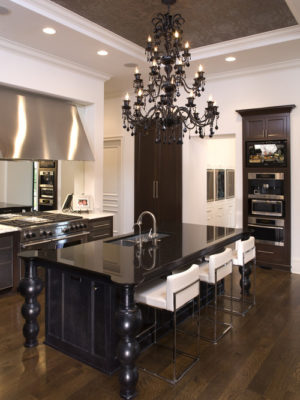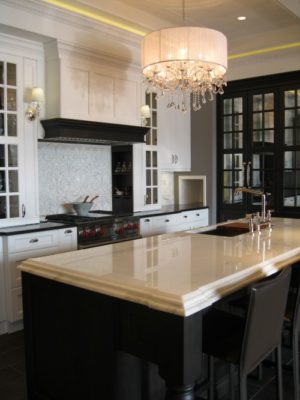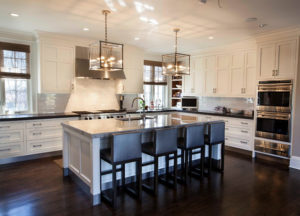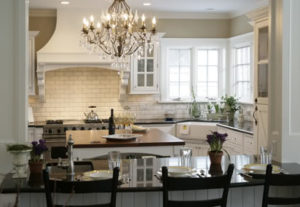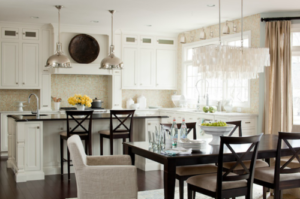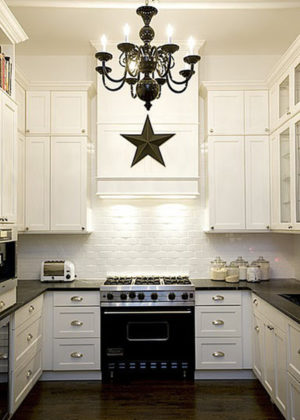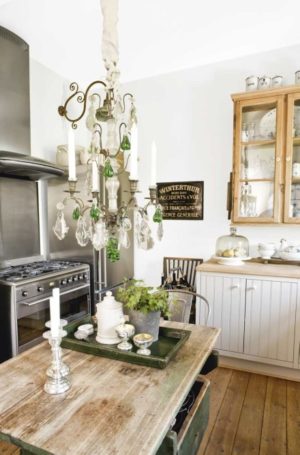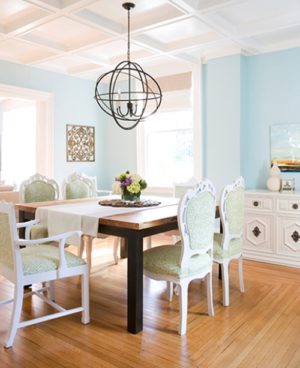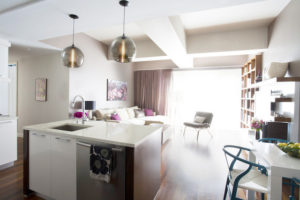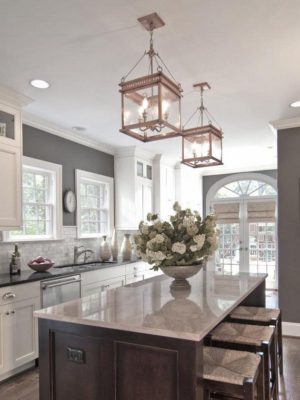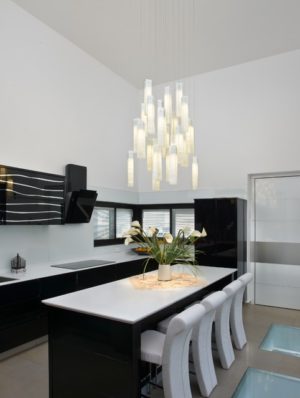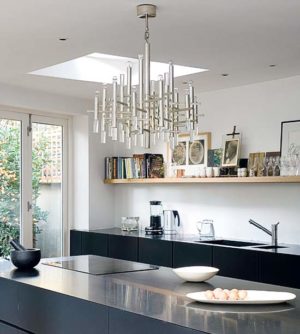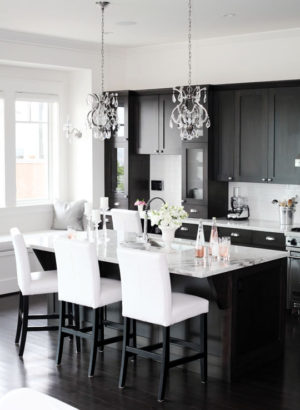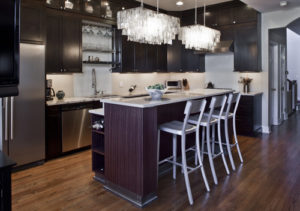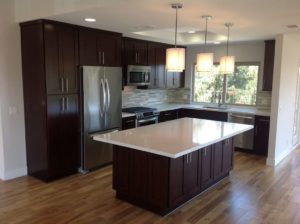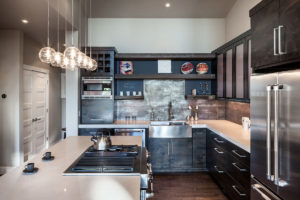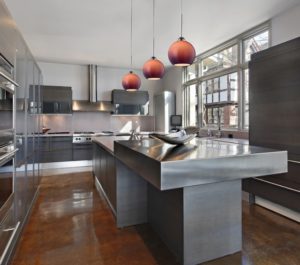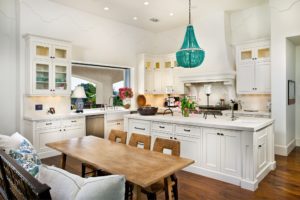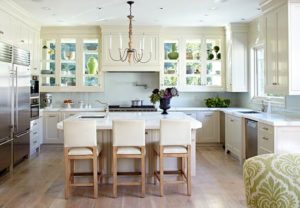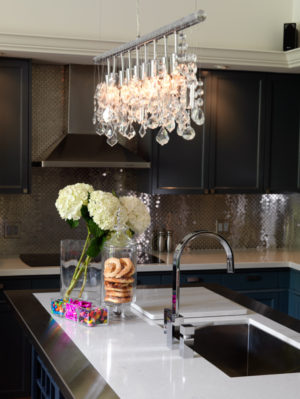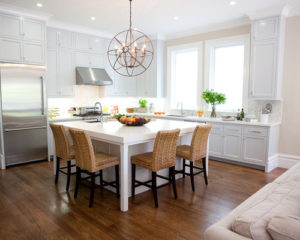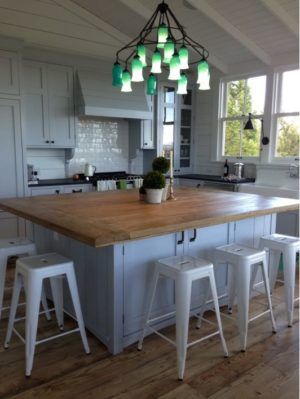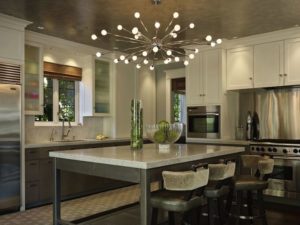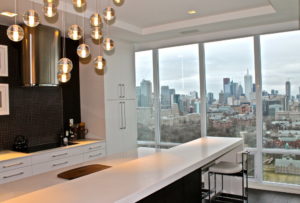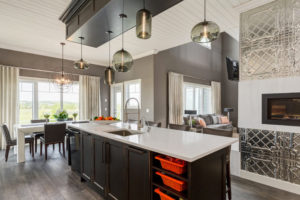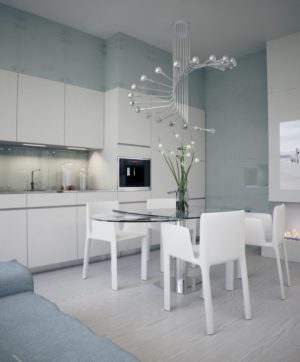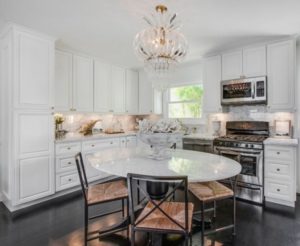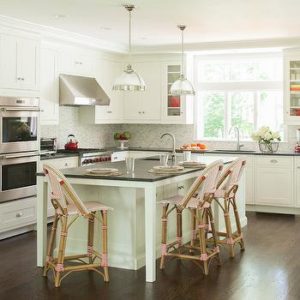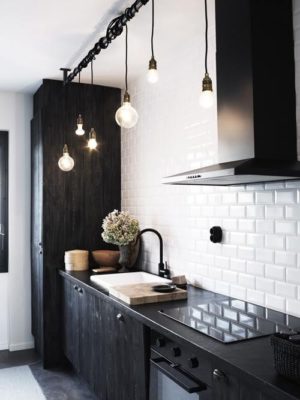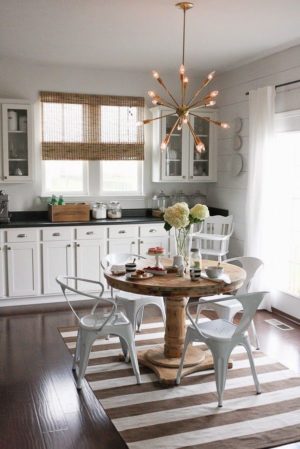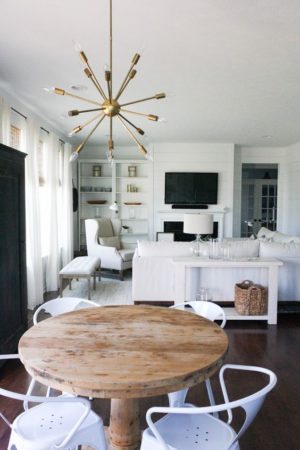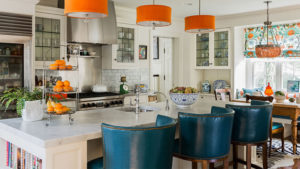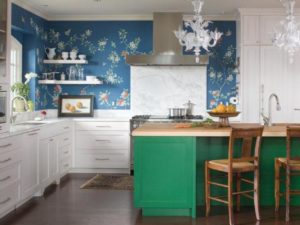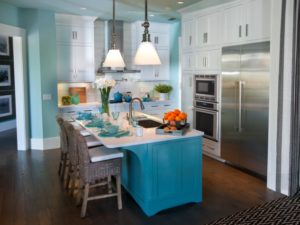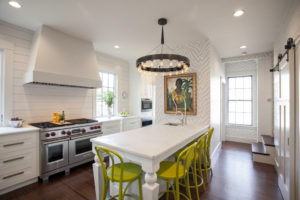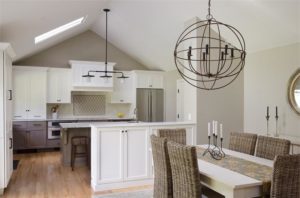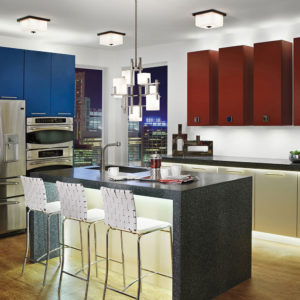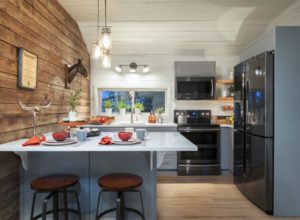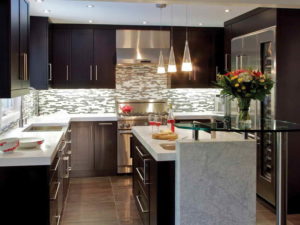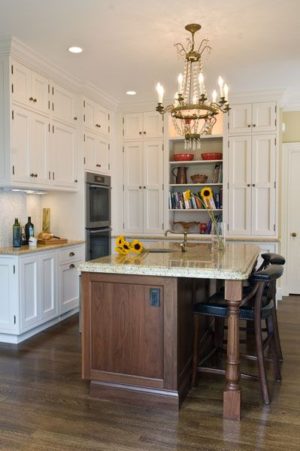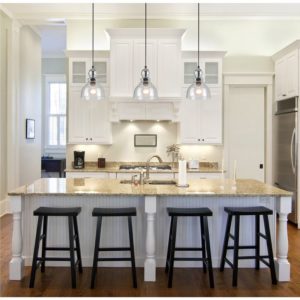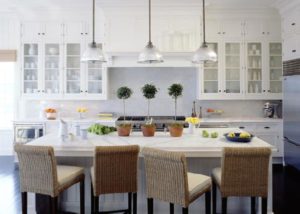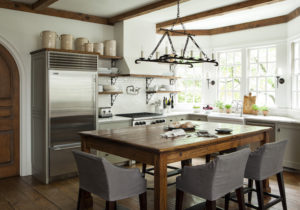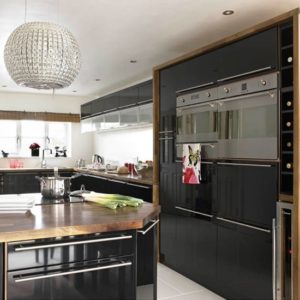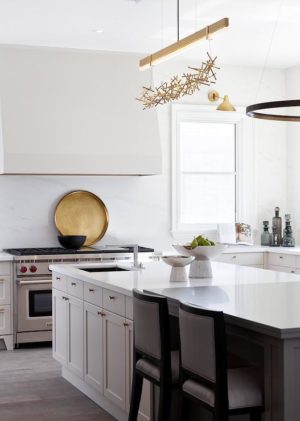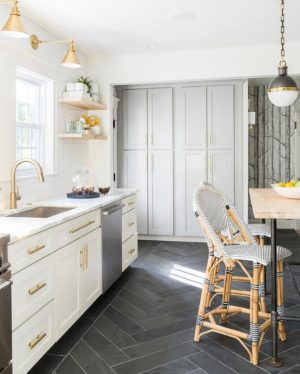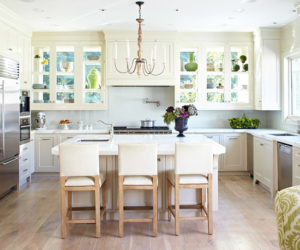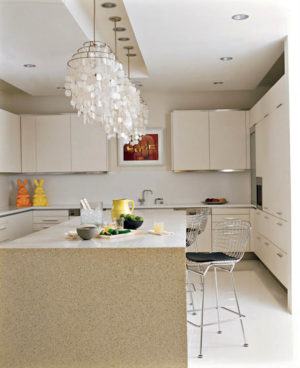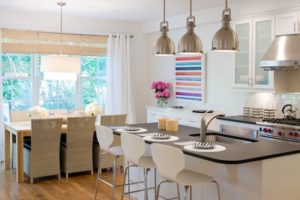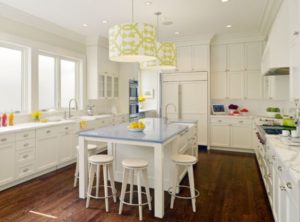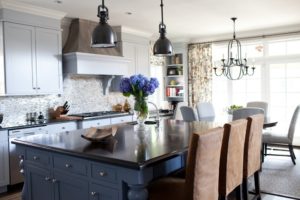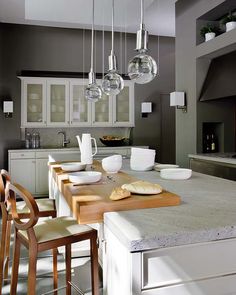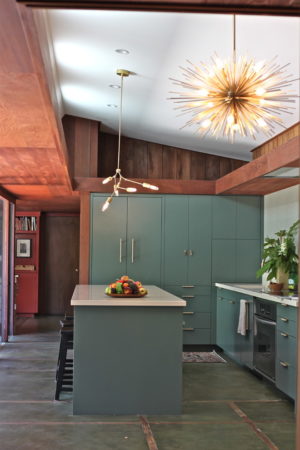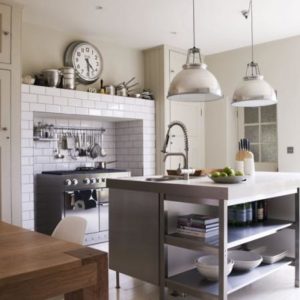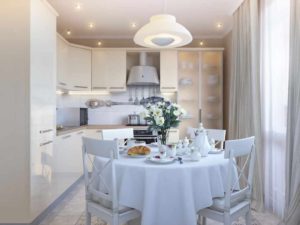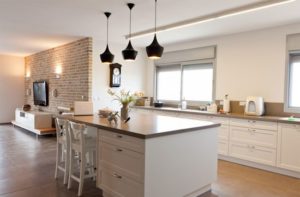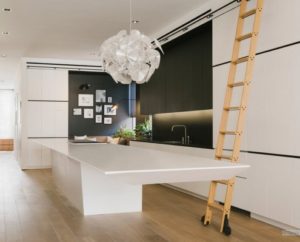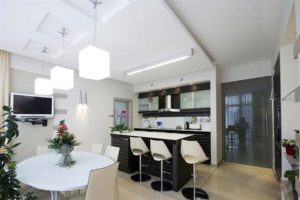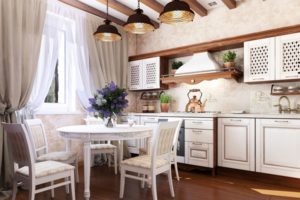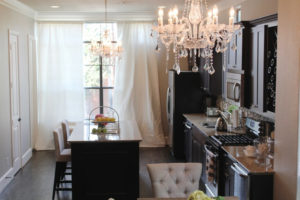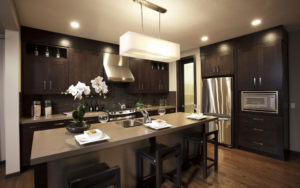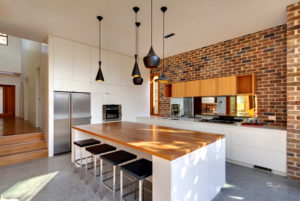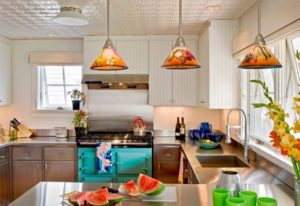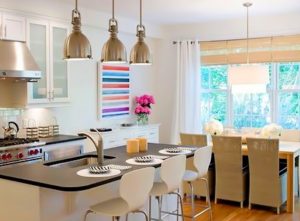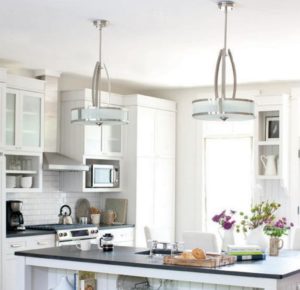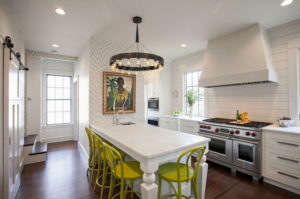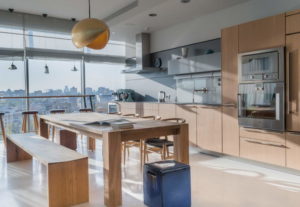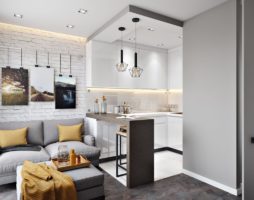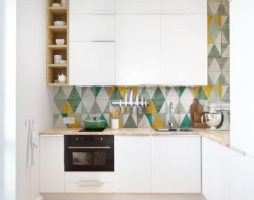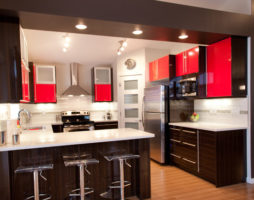The kitchen is one of the most important rooms in the house, because cooking is an integral part of our lives. Creating a cozy atmosphere and comfortable conditions in the kitchen is very important, then cooking is a joy and the food tastes better.
Lighting is a key characteristic in this matter, and the impression of being in the kitchen and how convenient it is to cook there depends on it. How to choose a chandelier for the kitchen so that it is both beautiful and well suited to other interior items? We will try to understand this issue - we will list what chandeliers are and how to properly organize lighting in the kitchen.
A few notes about lighting in the kitchen
The first thing to consider when dealing with the issue of lighting in the kitchen is that the kitchen is heterogeneous. Even in the smallest kitchen space, at least four zones can be distinguished:
- Cooking area
- Food storage area
- Washing
- Dinner Zone
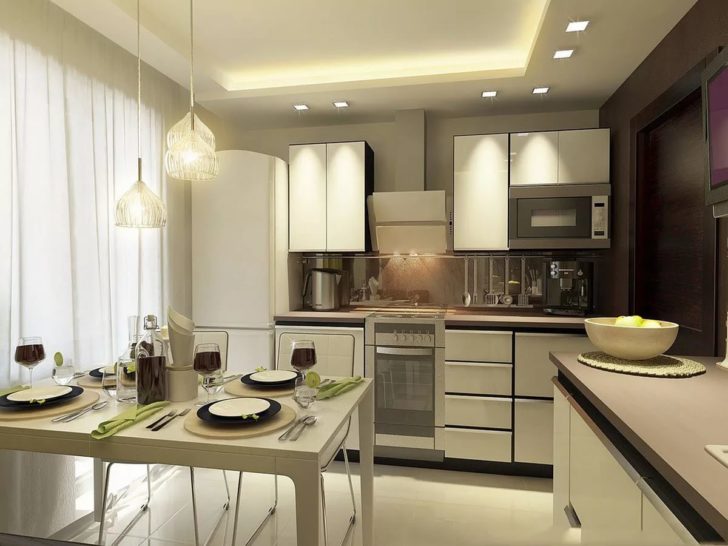
Lighting zones in the kitchen
Cooking area
This includes a table for cutting food and a stove. The most demanding area for lighting. This is not only a matter of convenience, but also a matter of safety. If there is not enough light, then there is a risk of injury when cutting products or incorrectly assessing their degree of readiness.
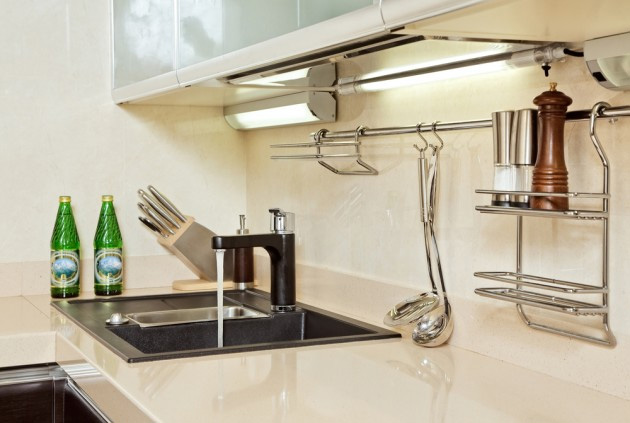
Cooking area lighting
Storage area
Refrigerator, cupboards, pantry are included in the storage area. The main thing here is to see what you take and what is written on the label.
Washing
Sink, dishwasher and plate cabinets. Here, bright lighting is not as important as in the previous two zones - it is enough not to miss the shelf for dishes.
Dinner Zone
During meals, bright light is not so important, the atmosphere of comfort is much more important - calm and pleasant lighting will increase the pleasure of eating.
These zones can be located side by side or be combined (for example, a dining table with a cutting table), or be at some distance from each other.

Chandelier over dining area
It turns out the following: firstly, kitchen zones of different purposes require different lighting intensity, and secondly, lighting for some zones is not required all the time. For example, after the food is ready and served on plates, the only place where light is required is the dining table itself. The conclusion from this is this: one chandelier for the kitchen is not enough and several light sources are needed to create comfortable conditions.
back to index ↑What parameters affect the selection of lighting
We figured out the principle of zoning, and also decided that one chandelier is unlikely to provide enough light. What else is worth paying attention to? There are several options:
- The presence of windows
- Which side do the windows face?
- kitchen area
- Ceiling height
- Location of zones
- Interior style
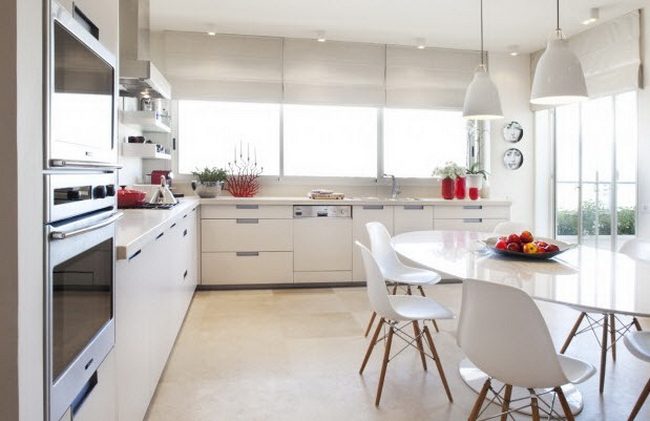
Organization of lighting in the kitchen
Windows in the kitchen
Indeed, before buying lighting fixtures for the kitchen, it is useful to evaluate the role of natural lighting.Large bright windows can give quite a lot of light, as a result, the included chandelier will be almost imperceptible. In a kitchen without windows, on the contrary, it is impossible to do anything without turning on the lighting.
Light or dark side?
Since the working day for many people begins in the morning, it is very important to know which side the window faces. Imagine the following example: you have windows on the bright side, you cook breakfast in the morning, have lunch at work, and have dinner in a cafe or restaurant. As a result, the question arises, is a chandelier really needed? Especially in the warm season, when the sun shines brightly in the morning. But if the windows are on the dark side, then you will have to turn on the lighting in the morning.
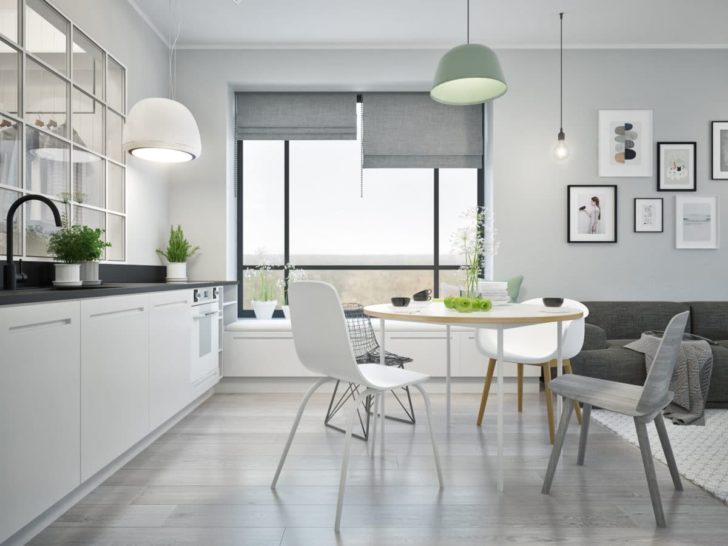
Chandeliers for the kitchen on the bright side
Kitchen area
One of the most important points. In a small kitchen, it makes no sense to hang a huge chandelier or mount a lot of lamps, a small chandelier and one or two lamps above the stove and cutting table will be enough. For a large room, on the contrary, you will need several chandeliers and at least a couple of lamps for each zone.
Ceiling height
A low ceiling can make it impossible to install a chandelier - you will just hit it with your head, the only way out of this situation is ceiling lights for the kitchen. With a high ceiling, you can not limit yourself in your choice - even a large and luxurious chandelier will not cause problems.
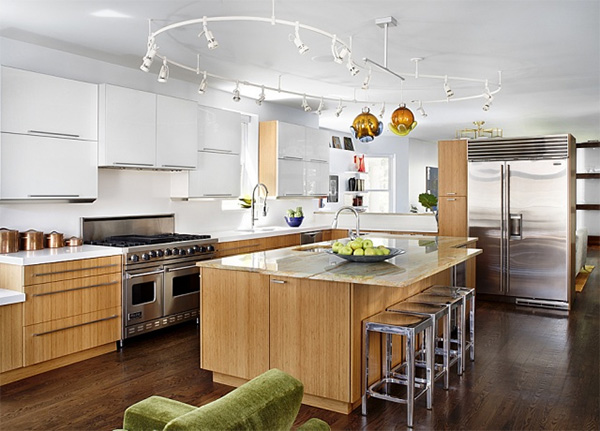
Chandelier for the kitchen with high ceilings
Location of zones
The area of the kitchen is an important parameter for determining the number and power of light sources, but to determine their optimal placement, the location of the main zones must be taken into account. Here are some simple examples to illustrate the meaning of this parameter:
The chandelier hangs in the center of the kitchen, and the cutting table and stove are located so that you will be facing the chandelier when working at them. In this example, it becomes obvious that the ceiling chandelier for the kitchen will illuminate two areas at once - the dining table and the cooking area.
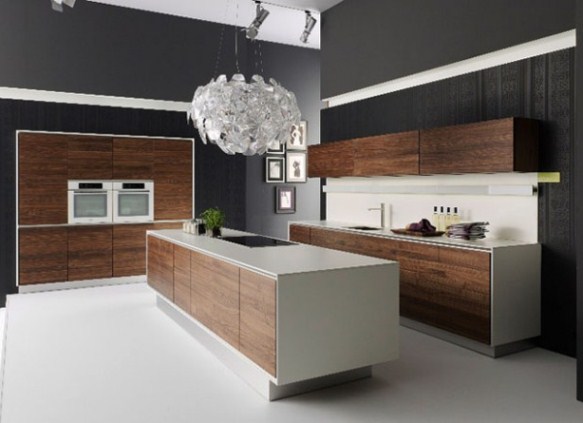
Placing a chandelier in the center of the kitchen above the work area
The chandelier is behind you when you are cooking at the stove or at the table. In this case, you will shade the workspace and to create better lighting, you will need to install additional fixtures.
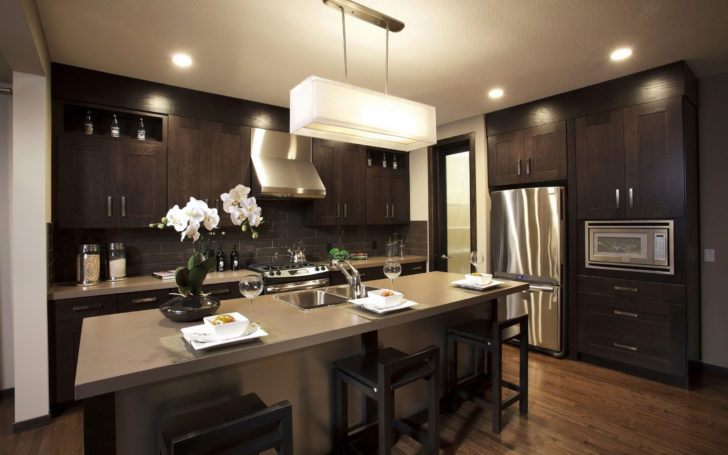
Additional illumination of the workspace
The angular arrangement of zones in the kitchen - then each will need a separate light source
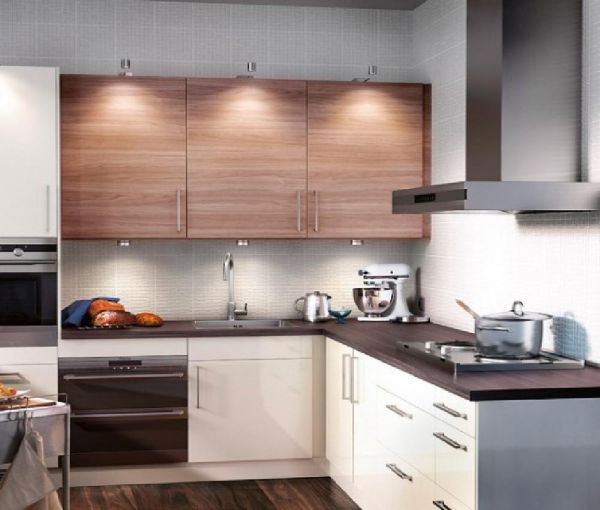
Corner kitchen lighting
Style
Creating a complete image of the kitchen is an important aspect, so the chandelier in the interior of the kitchen, like lamps, should fit into the overall picture, like pieces of a mosaic. Agree, a futuristic-looking metal chandelier with a bizarre shape will look out of place in a kitchen made in a classic or retro style.
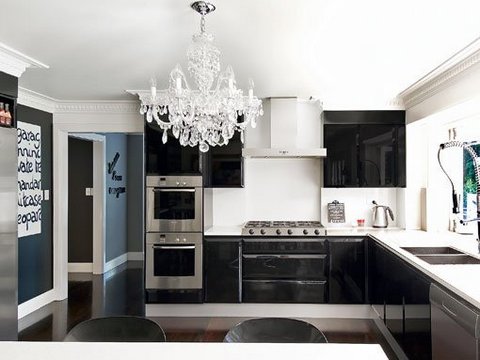
Chandelier as a bright accent in the interior
Features of lighting installation
The simplest and most obvious point in installing a ceiling chandelier for a kitchen or fixtures is that the places and methods for installing all lighting fixtures must be planned in advance. That is, if you suddenly decide to hang a chandelier or mount lamps on an already completed kitchen with furniture and appliances arranged, then be prepared to face some obstacles.
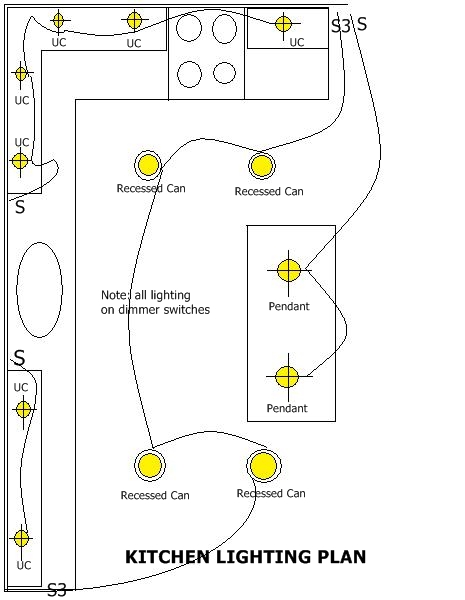
An example of a kitchen lighting scheme
First Do you know where the electrical wiring is in the kitchen? Without electricity, no light bulb will burn. So it is necessary to bring the wires to the places of future lighting installation.
Second - it is likely that in order to install sockets for lamps and fixtures for a chandelier, you will have to drill several holes in the ceiling and walls. Now imagine that all the furniture and brand new appliances are already in place. Not only do you have to move all this, but also a decent amount of debris and dust is formed, which will settle on the surface of all furnishings, besides, you can accidentally scratch or damage something. You can get out of the situation if you cover everything with a film or completely take it out of the kitchen. But it is better not to bring it to this, but to plan everything in advance.
And the third point - installation of additional lamps. Often they are installed on kitchen cabinets, as it is easier and more convenient than drilling walls.Therefore, when buying a set for the kitchen, consider where the lamps will be installed and ask the seller about it.
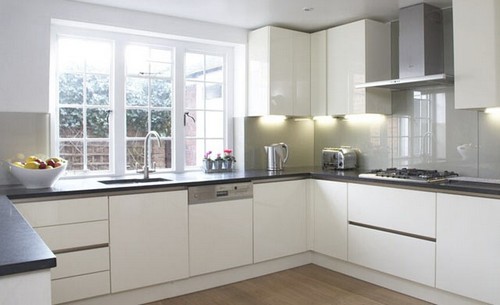
Additional lights on kitchen cabinets
Ceiling
Another important point is the ceiling. Stretch ceilings are popular now. There is nothing wrong with this: a stretch ceiling is inexpensive, easy and quick to install, most of the dirt is washed off it, it looks beautiful and modern. But it has one feature - the installation of any structures, such as fixtures for chandeliers or lamps, is best done before installing the ceiling, or at least coordinate it with the installer, who will make holes in the canvas for this or, even better, mount everything herself appliances. Cutting the ceiling yourself to install lighting is highly discouraged - without experience, there is a risk of making the holes uneven or in the wrong places, especially if you don’t know exactly where the wiring is.
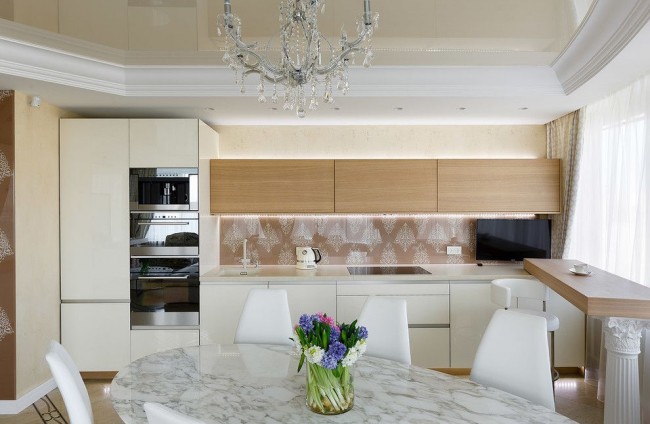
Chandelier for the kitchen with a stretch ceiling
In connection with the stretch ceiling, it is necessary to mention the mount for the chandelier. There are two types of fasteners - hanging on a hook and fastening on a bar. There should be no problems with a hook at the stretch ceiling - a pre-made hole for it will be enough.
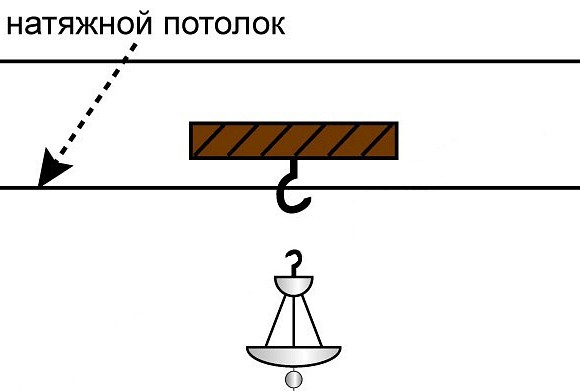
Fixing a chandelier on a hook
But with a plank mount, you need to know two parameters: the height of the bar and its diameter. This must be known before stretching the ceiling, then the installer will be able to make a hole of the required diameter in the canvas.
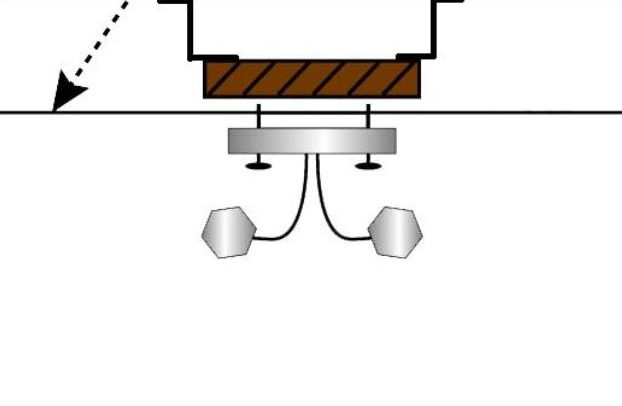
Fixing a chandelier to a bar
With a classic ceiling, hanging a chandelier will be a little easier - as a rule, most kitchens already have a hook for it. On the other hand, it is impossible to install ceiling lights for the kitchen in an already plastered and whitewashed ceiling, for this you will have to make a stretch or suspended ceiling. In the case of fastening to a suspended ceiling (plasterboard or other material), both its strength and the mass of the chandelier must also be taken into account.
back to index ↑Requirements for lighting fixtures in the kitchen
In the process of cooking food in the kitchen, various substances are released - smoke, steam, burning. Gradually, a plaque forms on the surface of equipment and furniture, but it is not immediately noticeable there. The same plaque will appear on lighting fixtures. This will lead to a decrease in their brightness and a deterioration in the quality of illumination.
You will have to deal with the removal of soot and soot from time to time. Therefore, it is desirable that all lamps are equipped with protective caps. Compare which is easier: removing soot deposits from a flat surface of a protective cap or from a curved surface of a lamp. It is possible that the lamp, in the end, will turn out to be so dirty that it will not work to clean it without damaging it, and you will have to make a replacement. Installing a hood will help to significantly reduce the problem of smoke and soot.
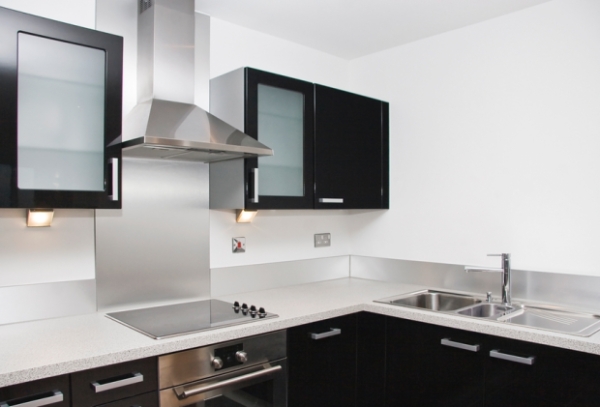
The hood will save lighting fixtures from steam and soot
Another important requirement is the convenience and reliability of switching on and off. Let's say in your kitchen, in addition to the chandelier, there are also several lamps, and all of them need to be turned on and off from time to time. And you will do this, perhaps with dirty or wet hands. Hence the requirement, similar to the caps for lamps - the lighting controls must also be either protected by a film or made of a material that can be easily cleaned. Otherwise, the buttons may jam from adhering dirt.
Regarding the convenience of the controls, we can say the following - they should be located in plain sight and be easily accessible. If you look for a switch for a long time or reach for it every time, this will not give you a pleasant experience. For example, it is appropriate to place a switch for general lighting or a chandelier at the entrance to the kitchen, next to the doorway. And the switches for additional lamps can be placed on the cabinets of the kitchen set, as well as the lamps themselves.The location of the switch on the bottom surface of the cabinet is very convenient - to activate it, you just need to raise your hand.
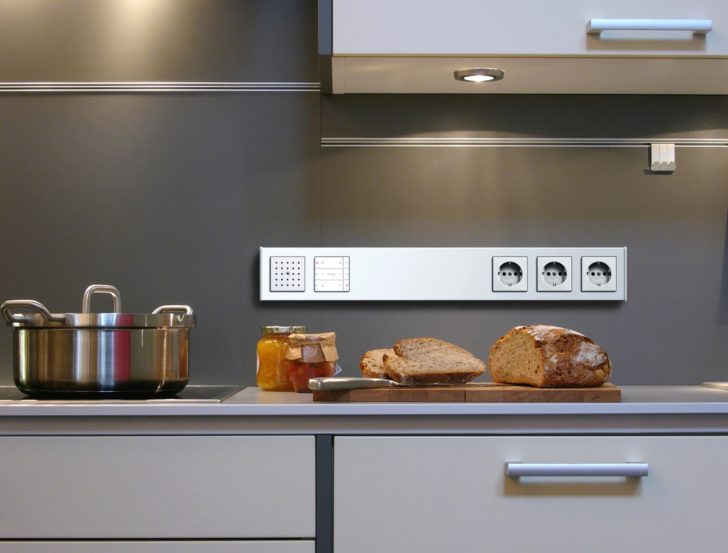
Place the lighting control panel in an accessible place
The use of lighting level controls in the kitchen, also called dimmers, will add comfort. It is most advisable to use them for powerful light sources - chandeliers or bright fixtures. Then, getting up at night to drink water, you can, in order not to interrupt sleep, do not turn on the lighting at full power. During the day or in the evening, different lighting intensities are also required - when it is light outside the window there is no need for bright light, and in the evening when preparing dinner, brighter light is already required.
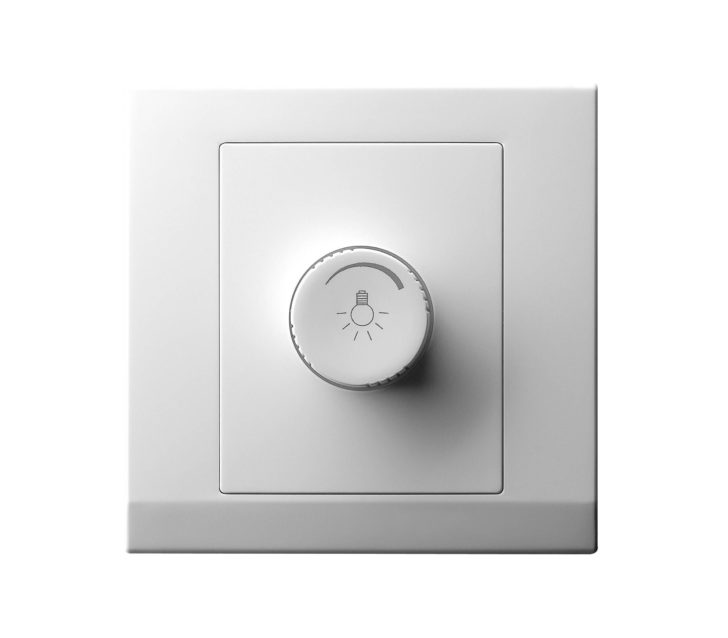
Dimmers allow you to adjust the intensity of lighting
Types of lamps
In many lamps and chandeliers, it is possible to replace lamps, including lamps of a different type, and even instructions are included that allow them to be properly disassembled, replaced and reassembled. But there are models that are assembled exclusively for lamps of certain characteristics or do not require replacement at all, especially for lamps. Therefore, before choosing and buying lighting fixtures, it is important to decide what type of lamps are right for you. Lamps, depending on the manufacturing technology, differ in the characteristics of the light given, energy consumption and service life. Consider the main types of lamps.
incandescent
The oldest type of lamp, until recently used everywhere. The design of a modern incandescent lamp has already turned more than a hundred years old. Due to the ease of production and operation, relative durability and low price, they have become widespread throughout the world. It is the incandescent lamp that most people associate with the concept of a lamp in general. The main disadvantages of incandescent lamps are high power consumption, heating, short service life compared to other types of lamps. A very low price compensated for all these shortcomings for some time, now incandescent lamps are gradually becoming a thing of the past. The light produced by them has a yellowish tint, so the best use for them would be in nightlights.
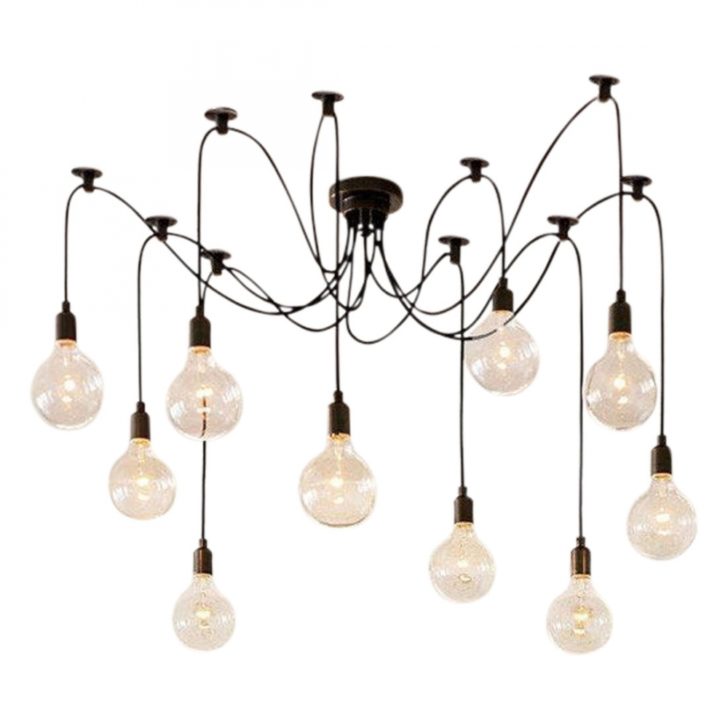
Chandelier with classic incandescent lamps
Halogen
Also incandescent lamps in essence, but with one difference - the internal space is filled with halogen gas, and not with an inert gas (or gas is pumped out). Compared to simple incandescent lamps, they have a longer life and brightness, lower power consumption. The heating of the lamp surface is even more pronounced in them - halogen lamps are even used as a heat source in cooking ovens.
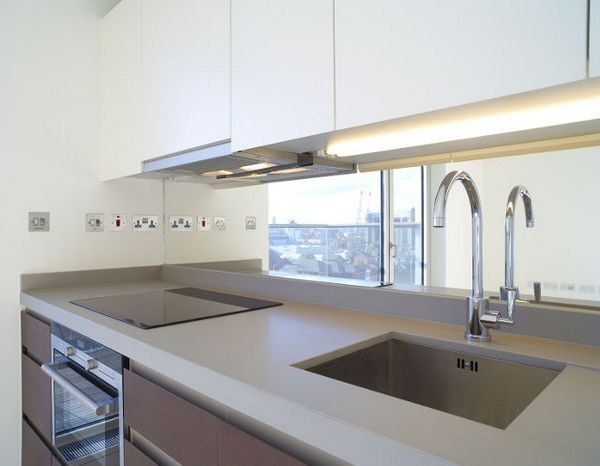
Illumination of the working surface with halogen lamps
Important point: The high surface temperature of incandescent lamps imposes restrictions on their use in lighting fixtures, the design of which includes plastic. From heat, plastic parts are deformed and destroyed. For the same reason, the use of incandescent lamps together with a stretch ceiling is possible only if the distance to the canvas is observed and the total power of incandescent lamps in the chandelier should not exceed a certain value. Otherwise, from heating, the ceiling canvas will begin to sag.
Fluorescent lamps
Their main advantage over incandescent lamps is their lower power consumption. Of the pluses, one can also note the ability to choose a lamp of the desired light temperature - if you are used to incandescent lamps, then you will like it. The disadvantage is the complexity of recycling - they cannot be thrown away or broken (which, unfortunately, is often neglected), because they contain toxic substances (mercury vapor) inside.
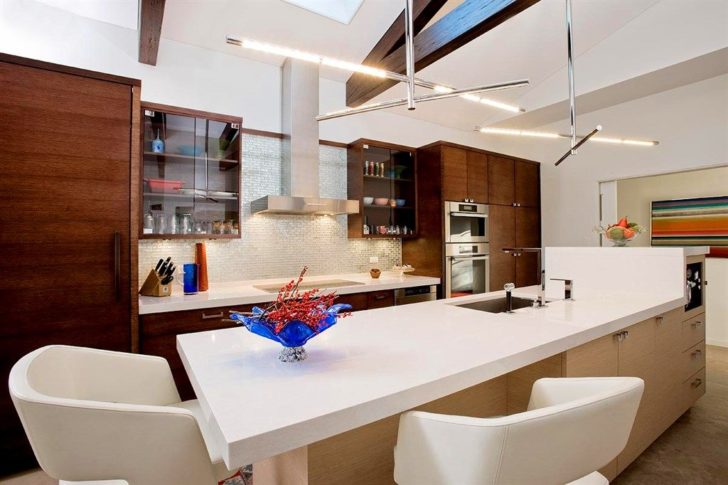
Fluorescent lamp can be adjusted to the desired temperature
LEDs
They have become widespread quite recently, before the main limitation for the sale of LED lamps was the high cost and lack of mass production lines. Energy Saving Champions. LED lamps, equal in illumination level to incandescent lamps, can have ten times less power consumption. They are also resistant to damage and durable and are also produced with different light temperatures.

LED lightening
Such a variety of lamps allows you to choose your own type of lamp for each lighting fixture. For a large chandelier, incandescent or halogen lamps are suitable. For spotlights - fluorescent or LED. LED lamps can even help in an almost hopeless situation - when you need to install spotlights in a finished and furnished kitchen. Their low power consumption allows them to last long in battery-powered fixtures, so there is no need for electrical wiring.
back to index ↑Photo gallery - chandelier in the kitchen
Video
